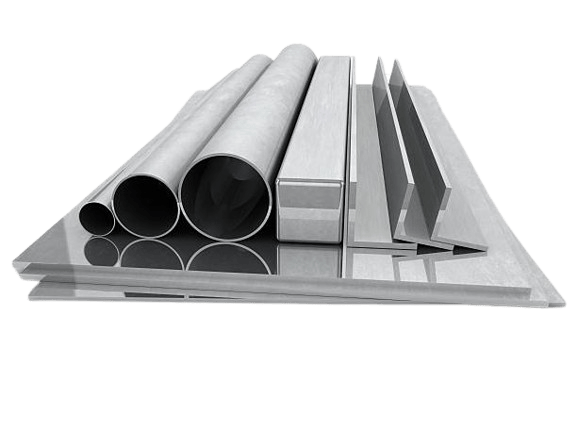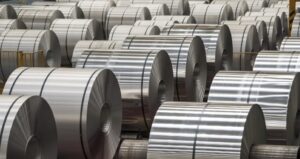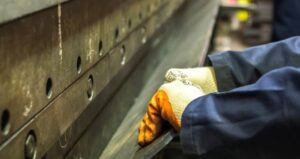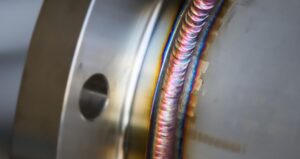Heat treatment is vital for improving aluminum properties through controlled heating and cooling processes, boosting strength, durability, and other characteristics. This post will delve into the diverse options for heat treating aluminum.
What Are The Types Of Heat Treatment Processes For Aluminum?
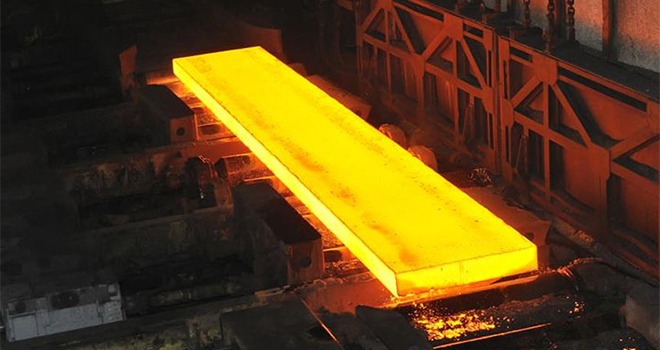
Heat treating aluminum, including annealing, homogenizing, solution heat treatment, natural aging, and artificial aging (precipitation hardening), operate within furnace temperatures spanning 240 to 1000°F, distinctly separate from steel treatments.
Annealing Aluminum
Annealing aluminum is a pivotal process that reverses work hardening caused by plastic deformation. During annealing aluminum, grain structures realign along slip planes, restoring malleability. By subjecting aluminum to specific temperatures (570°F to 770°F) for varying durations, typically between thirty minutes to three hours, annealing aluminum can effectively reset its crystalline grain structure. This method not only counteracts strain hardening but also relieves internal stresses from procedures like cold forging or casting. Annealing aluminum stabilizes dimensions, rectifies warping, and is beneficial for non-heat-treatable alloys used in forging, extrusion, and casting applications.
Homogenizing Aluminum
Homogenizing aluminum is a critical process that ensures the uniform distribution of precipitating elements throughout an aluminum part, particularly important for cast aluminum alloy components. During cooling, the outer layer in contact with the mold cools first, creating a surface layer of aluminum grains. As the part continues to cool, internal regions develop varying concentrations of alloying elements, leading to uneven strength characteristics. Homogenization involves heating the part close to its melting point (typically between 900°F and 1000°F) and allowing it to slowly cool. This method eliminates segregation, resulting in a cast part with a consistent internal structure, improving its formability and workability.
Solution Heat Treatment
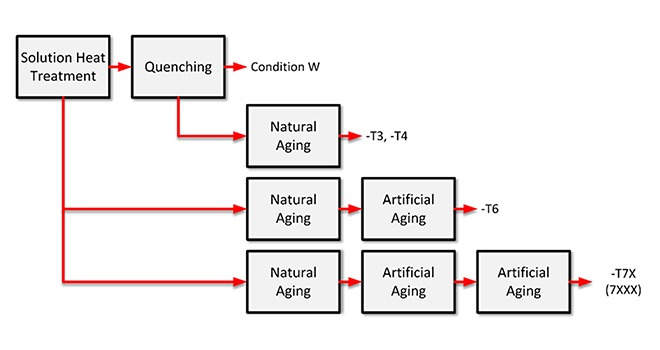
Solution Heat Treatment is a crucial process of heat treating aluminum, distinct from annealing due to its reliance on rapid cooling rates. During this treatment, elements responsible for age hardening are dissolved, forming spheroids and achieving a homogenized structure. To maintain this distribution, the part must be quenched, rapidly cooled to preserve the dissolved elements’ arrangement. The resulting part becomes more malleable. However, over time, these elements can precipitate again, leading to age hardening.
The temperature for solution heat treatment, typically between 825°F and 980°F, must be precise, within ±10°F of the target to be effective. Deviations can lead to loss of strength or discoloration. Following the correct temperature, a soaking period ranging from 10 minutes for thin parts to 12 hours for thicker ones is necessary. The rule of thumb is an hour of soaking per inch of cross-section thickness.
Quenching is the subsequent step, aiming to solidify the elements in place rapidly. Water is often the preferred quenchant for aluminum alloys. Any necessary forming should be promptly performed after quenching to avoid natural aging, which can complicate further work on the part. This contrasts with steel, which becomes brittle after quenching.
Natural Aging Aluminum
After undergoing solution heat treatment, aluminum experiences natural aging as the dissolved elements gradually precipitate out, increasing the material’s strength through age hardening.
Natural aging unfolds at room temperature over a period of four to five days, with the majority of hardening occurring within the first day. This rapid transformation necessitates prompt shaping of aluminum parts following solution heat treatment to capitalize on the accelerated effects of natural aging.
Artificial Aging
To achieve maximum hardness in certain aluminum alloys, complete precipitation of the dissolved elements is necessary. Not all aluminum alloys can attain optimal hardness through natural aging at room temperature. For these alloys, reaching a desired level of hardness requires a process known as precipitation hardening, often referred to as artificial aging.
In precipitation hardening, the aluminum is heated to a specific temperature unique to the alloy, typically ranging between 240°F and 460°F, with a strict tolerance of within ±5°F of the target temperature. Subsequently, it undergoes a soaking period lasting from six to twenty-four hours, followed by cooling to room temperature. The outcome is a notable enhancement in the aluminum’s yield strength, a moderate increase in tensile strength, and a reduction in ductility.
What Is The Best Heat Treatment For Aluminum?

The choice of heat treatment for aluminum is contingent on the specific alloy and desired outcomes. Annealing softens aluminum, enhances ductility, and relieves internal stresses. Solution heat treatment dissolves alloying elements for a uniform structure, crucial for subsequent processes. Precipitation hardening (artificial aging) increases strength and hardness by allowing precipitates to form. Quenching and aging locks in properties, vital for high-strength components. Homogenization ensures even alloy distribution. Cold working (strain hardening) boosts strength via mechanical stress. The best treatment hinges on alloy composition, desired properties, and application specifics, demanding a close adherence to material specifications and functional needs.
What Types Can You Choose?

Heat treating aluminum components such as plates, rods, coils, and profiles can significantly enhance their mechanical properties. Different forms of aluminum require specific heat treatment methods to optimize their characteristics.
For aluminum plate, Solution Heat Treatment is commonly employed to dissolve alloying elements and create a uniform structure before undergoing Precipitation Hardening for increased strength.
In the case of aluminum rod, Annealing is utilized to facilitate easier machining or forming, while Aging enhances strength by allowing precipitates to form within the aluminum structure.
When it comes to aluminum coil, Annealing is used to soften the material for subsequent forming operations, whereas Strain Hardening through Cold Working increases strength and hardness by deforming the coil at room temperature.
For aluminum profile, Quenching and Aging post-Solution Heat Treatment can be effective in locking in desired properties, and Homogenization ensures an even distribution of alloying elements throughout the profile.

